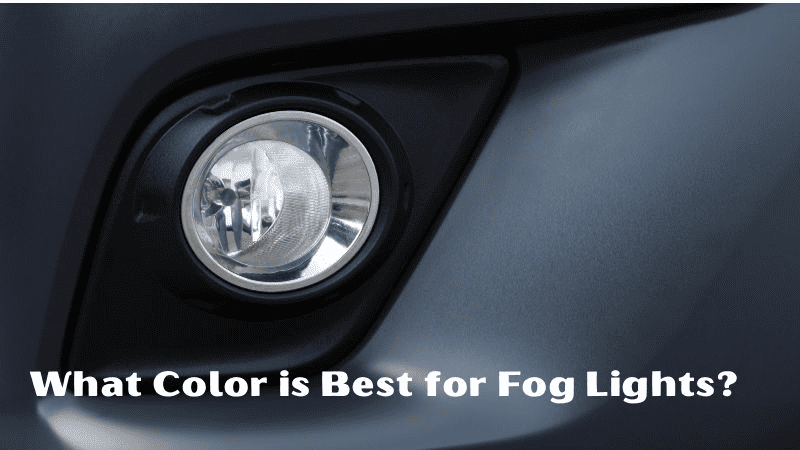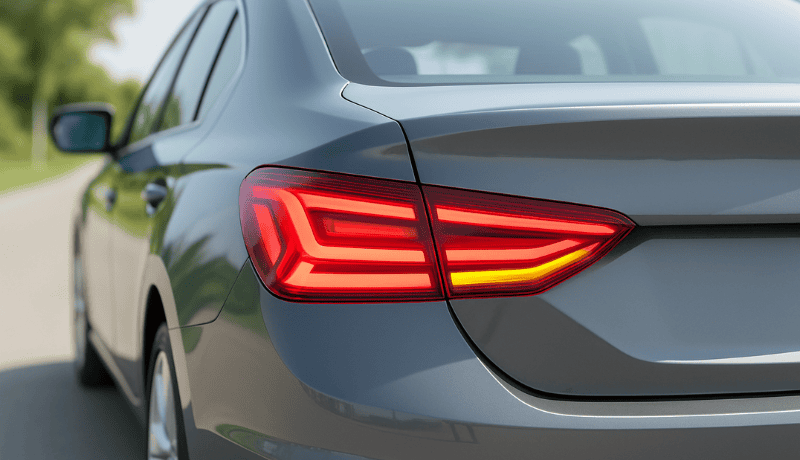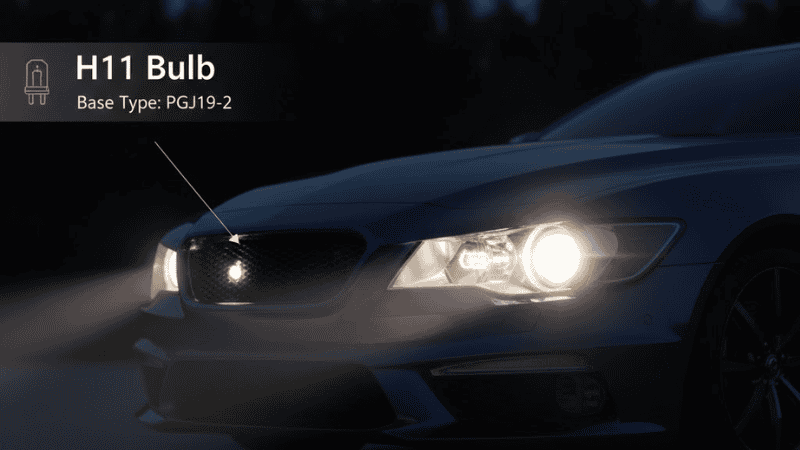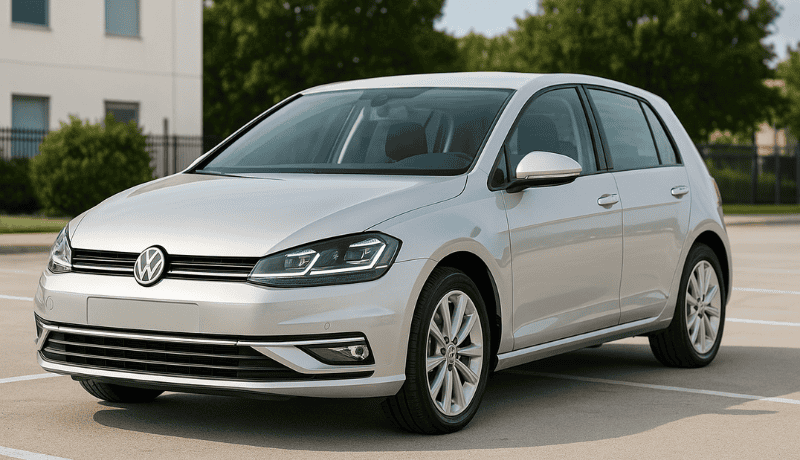So, which one should you choose? Yellow or White? Well, there’s also a third option: Blue. In this blog, we will compare all three colors and help you decide the best color for your fog lights.
Understanding Fog Lights

Fog lights are unique because they are designed to cut through the fog, lighting up the road ahead without bouncing light off the fog and reducing visibility. These lights are used in poor weather conditions, such as fog, heavy rain, snow, or dust. They are positioned lower on the vehicle’s front bumper to provide better visibility and reduce glare to oncoming drivers.
There are two main types of fog lights: halogen and LED. Both have their advantages, but the color of light they emit matters most when it comes to visibility in foggy conditions.
The Science of Light and Visibility
Now, before we dive into the color comparison, let’s understand the science behind light and visibility. Our eyes see colors because of the different wavelengths of light. Each color has a different wavelength, for example, red has a longer wavelength than blue. In foggy conditions, the water droplets in the air scatter light, making it difficult for our eyes to focus on objects. That’s where fog lights come in.
Fog lights aim to minimize this scattering effect and provide a more focused light beam that can cut through the fog. However, with each color, the scenario changes. In other words, the color changes according to the scenario. Sounds confusing? Well, keep reading and you will get rid of this confusion and all other questions!
Review of Popular Fog Light Colors
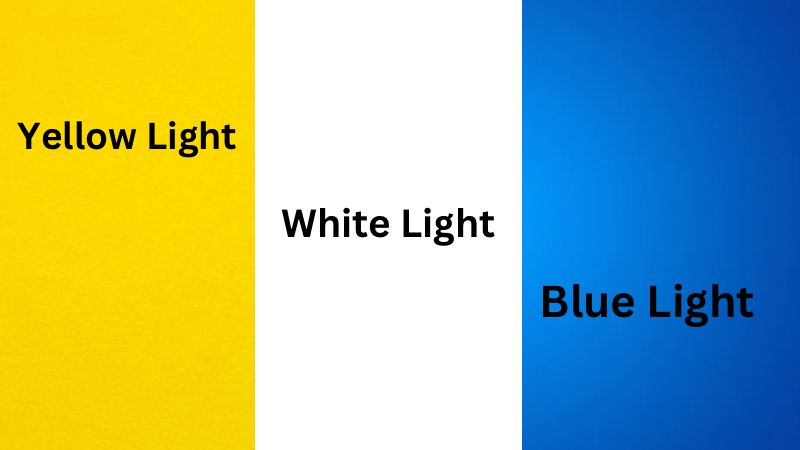
There are three popular fog light colors: yellow, white, and blue. Let’s see how they differ from each other and which color is ideal for which type of driving conditions.
1. Yellow Light
In Physics, yellow light sits squarely between green and orange on the visible light spectrum, with a wavelength range of 570 to 580 nanometers. This hue has been traditionally favored for its ability to penetrate foggy conditions, improve visibility, and help a driver concentrate better.
The main benefit of yellow fog lights is that they enhance the distance of visibility under foggy conditions while also making your vehicle more noticeable to other drivers and pedestrians.
Its effectiveness in fog is not just a matter of performance but also of psychological appeal. The warm, golden tones of yellow light resemble the comforting glow of a sunset, invoking feelings of joy and happiness among many. This emotional response and its practical benefits make yellow a popular and wise choice for fog lights.
2. White Light
White light is formed by combining all the frequencies, wavelengths, or colors of the visible light spectrum. That’s the reason why it does not have an average wavelength. This feature gives white light a significant advantage regarding visibility and perception.
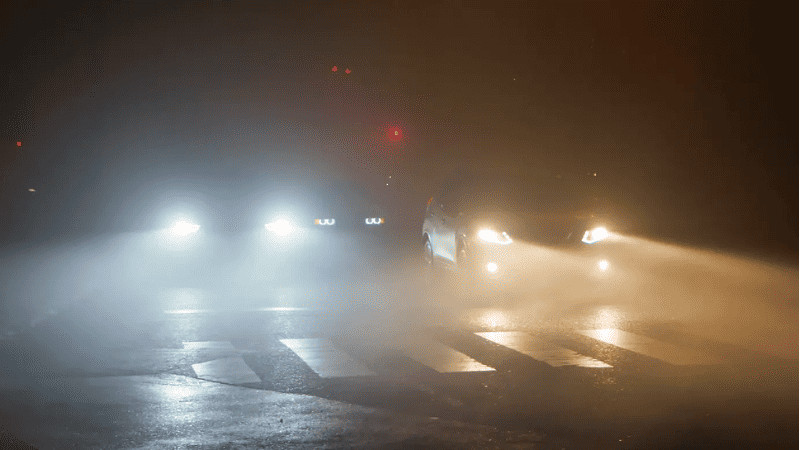
The primary benefit of using white fog lights is the ability to distinguish objects with greater clarity, as there is no color tint altering the perception of objects ahead. Also, white light provides a crisp and bright illumination, typically ranging between 5000 to 6000 Kelvin, which is ideal for many driving conditions.
This high brightness and clarity make white light an excellent choice for fog lights, particularly when precise visibility is important.
3. Blue Light
Blue light falls within the 380 to 500-nanometer range in the visible spectrum, marking it as the color with the shortest wavelength and highest energy. Interestingly, about one-third of all visible light is considered blue light. This specific attribute of blue light allows it to offer improved visibility and a modern aesthetic to drivers.
But because of short wavelengths, when blue light hits the water particles, it is more likely to bounce off, reflecting into your eyes. This process reduces your ability to see through the fog effectively. Despite its modern look and high visibility under clear conditions, the properties of blue light can hinder visibility in foggy weather.
Pros and Cons of Different Fog Light Colors
Yellow, White, or Blue—each color has its advantages and disadvantages. Let’s explore them to help you decide which fog light color to choose!
Yellow Fog Lights
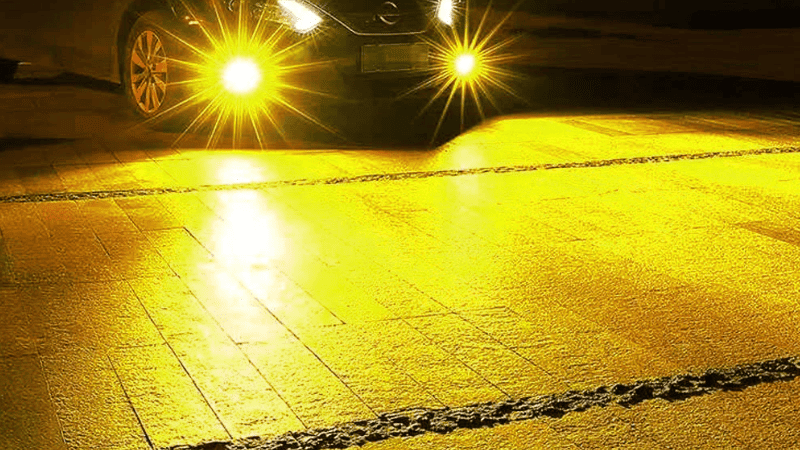
Pros:
- Yellow light has an optimal wavelength that allows it to cut through fog effectively, improving overall visibility.
- It improves how far ahead a driver can see, making driving safer.
- The unique hue of yellow can help maintain driver focus in poor visibility conditions.
- Yellow fog light makes your vehicle stand out, increasing its visibility to other road users including drivers and pedestrians.
- The warm, golden tones of yellow light can promote joy and happiness. This can have a positive effect on a driver’s mood and concentration levels.
Cons:
- In heavy rainfall, yellow fog lights might produce a glare similar to blue lights, complicating the task of distinguishing objects on the road.
- This glare can reduce the effectiveness of yellow fog lights in improving visibility in poor weather conditions.
White Fog Lights
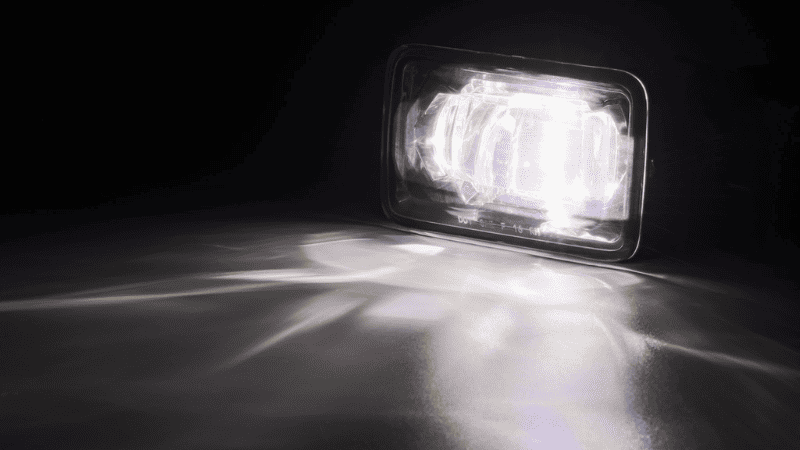
Pros:
- White fog light produces exceptional illumination that penetrates dark spots more efficiently, enhancing the ability to identify potential hazards.
- It is highly adaptable for everyday use, blending well with the aesthetic of most vehicles and adding to the overall design.
- White lights offer the ability to distinguish objects with greater clarity without any color tint altering the perception.
- It provides bright illumination, typically between 5000 and 6000 Kelvin, and is ideal for many driving conditions.
Cons:
- The high brightness can sometimes be overwhelming in fog, rain, or snow because white light tends to scatter less.
- Due to the shorter wavelengths, white fog lights are more likely to cause refracted or bounced-back light. This can result in glare, particularly in foggy conditions, as the light reflects off water particles in the air.
- The high level of brightness can lead to eye strain. This can make prolonged driving under such conditions more challenging.
Blue Fog Lights
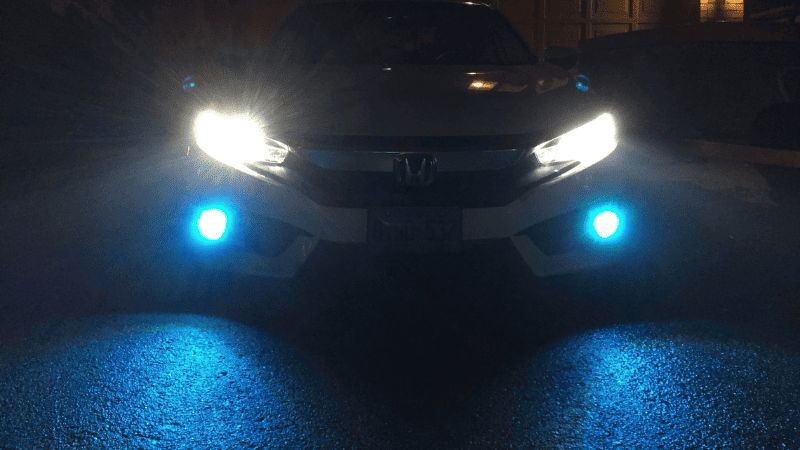
Pros:
- Blue fog lights give the vehicle a modern, aesthetic appearance, appealing to drivers who prioritize style over functionality.
- The distinct appearance of blue light can make your vehicle more noticeable in traffic, potentially improving road safety.
- Blue lights can significantly reduce the appearance of shadows and contrast, offering a clearer view of the road ahead.
Cons:
- Blue fog lights may result in citations and fines due to not being legal for road use in most countries.
- They can be mistaken for law enforcement vehicles, leading to potential confusion among other road users.
Choose the Right Color for Your Needs
Choosing the right color for your fog lights depends on your typical driving conditions and personal preferences. However, yellow fog lights or amber fog lights are widely considered the best choice for almost all scenarios. Imagine driving through the Pacific Northwest where foggy conditions are common. Yellow lights can help you see better, making your journey safer and more enjoyable.
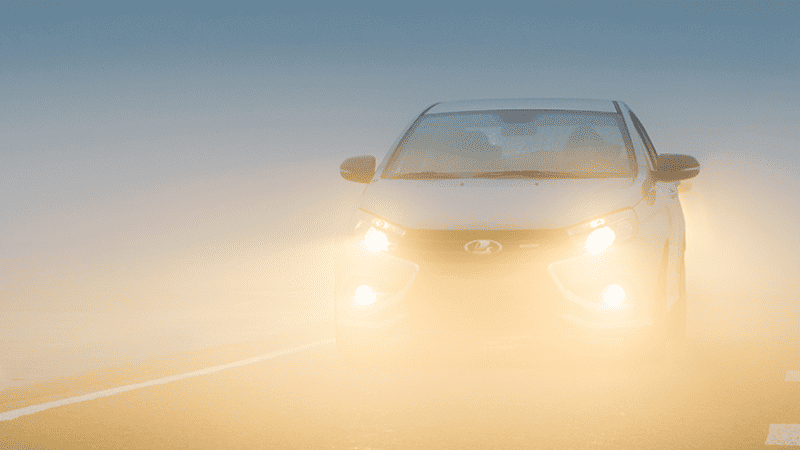
But what about White and Blue fog lights?
Well, if you drive primarily in urban areas where fog is rare, white LED fog lights might be the superior choice. Their crisp and bright illumination provides exceptional clarity, perfect for spotting pedestrians and obstacles on the road. Consider driving through a dimly lit parkway or an unlit rural road. The enhanced illumination from white fog lights can help identify potential hazards, such as animals or debris on the road.
Blue fog lights, despite their stylish appearance and high visibility under clear conditions, may not be the best choice for practical use due to their potential legal issues and decreased effectiveness in foggy conditions. However, for those who prioritize the aesthetic appeal of their vehicle or live in regions with minimal fog occurrences, blue lights offer a modern, sleek look. They could be considered for off-road vehicles used in dry, clear conditions where their unique appearance can be fully appreciated without compromising safety.
Conclusion
So, what color is best for fog lights? We hope this guide has helped you understand the pros and cons of each color, making it easier for you to choose the right fog lights for your needs. Fog lights are not what you would use every day, but when you do need them, they can make a significant difference in your driving experience.
Whether it is yellow, white, or blue fog lights, always prioritize safety and functionality over style before you opt for any of these! We will always go for YELLOW!
Can’t Find Quality Fog Lights? Visit Carlightvision Today!
Ready to enhance your driving experience with the perfect fog lights? Look no further! At Carlightvision, we offer an exceptional selection of high-quality fog lights tailored to your needs.
We have been in the market since 2008 and have fulfilled the global demand for custom automotive headlights at affordable wholesale prices. Contact Us to fulfill your car light demands now!
